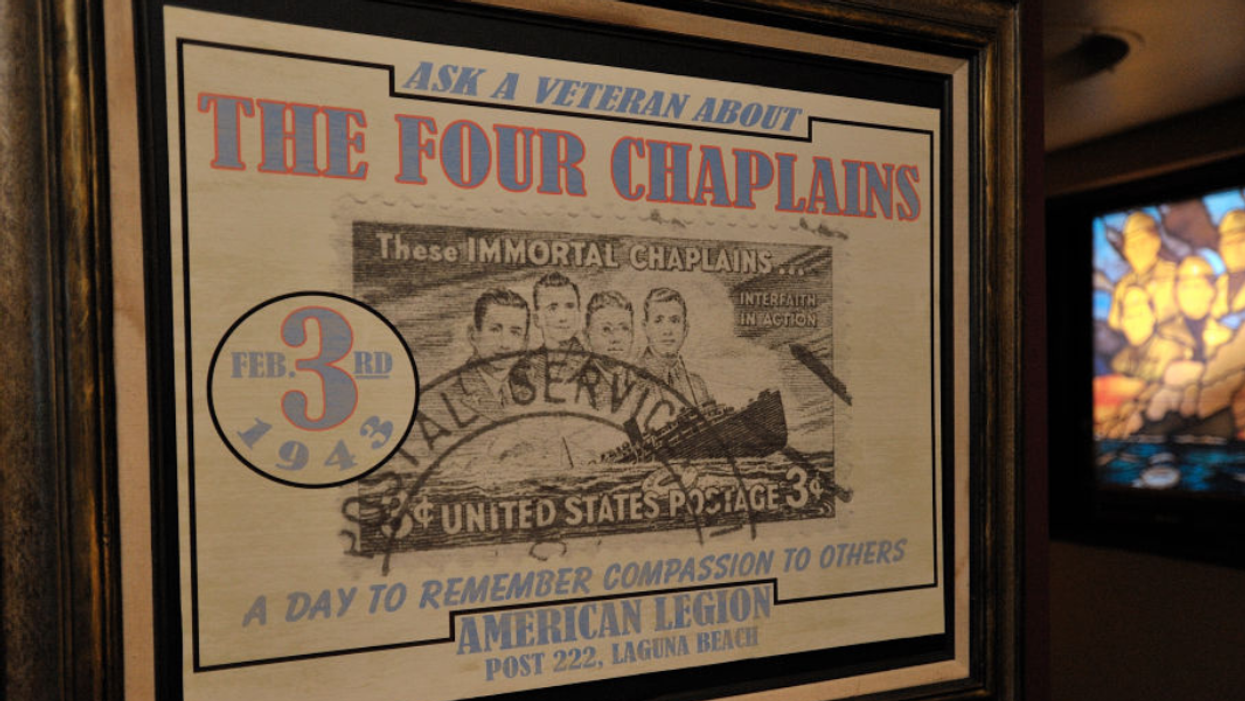Rabbi Charles E. Savenor is the Executive Director of Civic Spirit, a national organization that provides training in civic education in Jewish, Catholic, Christian, and Islamic day schools.
With more American troops desperately needed to fight in Europe during World War II, the SS Dorchester left New York on January 23, 1943. Formerly a civilian ship, the Dorchester - like the 900 men onboard - was recruited for military service.
During the early morning hours of February 3rd, the German submarine U-223 fired on the Dorchester off Newfoundland. Exploding in the boiler room, this missile cut off the electricity and released thick clouds of gas and steam all over the ship. The immediate aftermath of the damage disoriented those onboard and paralyzed many with fear, thereby impeding their ability to head to the lifeboats. In fact, only two of the fourteen lifeboats were successfully utilized as soldiers and crew were directed to abandon ship. Many soldiers jumped into the freezing water and waited for rescue.
Along with the soldiers on the Dorchester were four military chaplains - a Catholic, a Jew, and two Protestants. Each embraced different faiths, yet they were united in their desire to serve their country. “The Four Chaplains” - George L. Fox, John P. Washington, Alexander D. Goode, and Clarke V. Poling – were all inspired by the attack at Pearl Harbor to enlist.
When the ship was attacked, these chaplains worked together to assuage the fears of those onboard and guide the men to safety, primarily to the lifeboats. In the smoky chaos aboard the Dorchester, countless men did not have their life jackets, forgetting them below deck. To address this obstacle, these clergymen found more and distributed them swiftly. When this supply of life jackets ran out, the four chaplains did not hesitate to take off theirs and give them away. We can only imagine that they grasped the implication of their actions.
As the Dorchester sank into the ocean, soldiers watched from afar as the four chaplains sat shoulder to shoulder and recited prayers. These four men could have made their way to safety, but chose to go down with the ship and the souls whom they pledged to protect, comfort, and inspire.
Nearly 700 people died in this deadly attack, regarded as one of the worst at-sea tragedies during the war. Each life taken - then and now - is a tragedy. And yet, the story of the four chaplains has been lifted up decade after decade because of their selfless bravery and unflinching commitment to God, country, and humanity.
The actions and attitude of the four chaplains reflect the highest values of civic education. The field of civics unfortunately took a back seat in American schools for the past few decades, which may help us understand why the story of the SS Dorchester resonates so deeply.
At a moment of deep division and polarization in America, Chaplains Fox, Washington, Goode, and Poling are more than fallen heroes in battle. Their selfless embrace of our shared civic responsibilities reminds us of the powerful potential within ourselves as stewards of our democracy.
Eighty years later, the four chaplains continue to inspire. Will we heed their call?



















